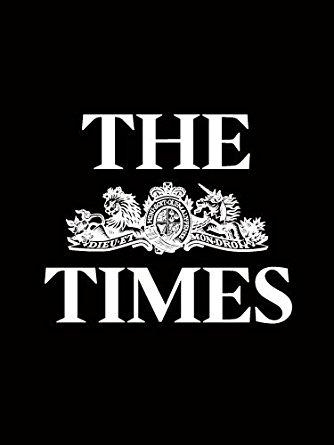1
0
2148
Фабула судового акту: Заявник – юридична особа, яка є власником та видавцем газети «Таймс» (Times), стверджувала, що положення законодавства Англії, згідно з яким перебіг строку для судового розгляду справ про дифамацію (наклеп) в Інтернеті (Правила щодо інтернет публікацій) починається щоразу, коли відбувається використання таких публікацій в Інтернеті, були необґрунтованим і непропорційним втручанням в право на свободу вираження поглядів.
У грудні 1999 року Заявник опублікував дві імовірно наклепницькі статті про приватну особу. Обидві статті були розміщені на сайті газети в день публікації їх в паперовій версії газети. Під час подальшого судового розгляду щодо дифамації відносно заявника на нього були покладено обов’язок додати два коментарі до обох статей в інтернет-архіві про те, що вони стали об'єктом судового розгляду і не повинні відтворюватися і на них не допускається посилання без попередньої консультації з юридичним відділом газети.
У Постанові у справі ЄСПЛ повторив, що стаття 10 Конвенції не гарантує пресі нічим не обмежену свободу вираження поглядів навіть стосовно висвітлення тем, що викликають сильну стурбованість громадськості. Заявник не заперечував законність втручання; Правила щодо інтернет-публікацій спрямовані на захист прав і репутації інших осіб. Отже, таке втручання мало законну мету. Суд підкреслив, що з урахуванням своєї доступності і можливості зберігання великої кількості інформації Інтернет відіграє важливу роль у забезпеченні доступу громадськості до новин і полегшує поширення інформації в цілому. У цій справі Суд визнав, що не було допущено порушення статті 10 Конвенції оскільки інтернет-архіви адмініструються самою газетою, а суди не зобов’язували вилучати газети цілком, отже, вимога додати відповідні коментарі в інтернет-версії газети було пропорційною мірою.
ЄВРОПЕЙСЬКИЙ СУД З ПРАВ ЛЮДИНИ
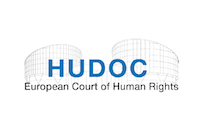
FOURTH SECTION
CASE OF TIMES NEWSPAPERS LTD (Nos. 1 and 2)
v. THE UNITED KINGDOM
(Applications nos. 3002/03 and 23676/03)
JUDGMENT
STRASBOURG
10 March 2009
FINAL
10/06/2009
This judgment has become final under Article 44 § 2 of the Convention.
In the case of Times Newspapers Ltd (nos. 1 and 2) v. the United Kingdom,
The European Court of Human Rights (Fourth Section), sitting as a Chamber composed of:
Lech Garlicki, President,
Nicolas Bratza,
Giovanni Bonello,
Ljiljana Mijović,
Päivi Hirvelä,
Ledi Bianku,
Nebojša Vučinić, judges,
and Lawrence Early, Section Registrar,
Having deliberated in private on 17 February 2009,
Delivers the following judgment, which was adopted on that date:
PROCEDURE
1. The case originated in two applications (nos. 3002/03 and 23676/03) against the United Kingdom of Great Britain and Northern Ireland lodged with the Court under Article 34 of the Convention for the Protection of Human Rights and Fundamental Freedoms (“the Convention”) by Times Newspapers Ltd (“the applicant”), on 28 October 2002 and on 28 July 2003 respectively.
2. The applicant was represented by Reynolds Porter Chamberlain, a law firm in London. The United Kingdom Government (“the Government”) were represented by their Agent, Mr J. Grainger of the Foreign and Commonwealth Office.
3. The applicant alleged that the rule under United Kingdom law, whereby a new cause of action in libel proceedings accrues each time defamatory material on the Internet is accessed (“the Internet publication rule”), constituted an unjustifiable and disproportionate restriction on its right to freedom of expression.
4. On 11 October 2005 the Court declared inadmissible part of the application and communicated the remainder of the application to the Government. It also decided to examine the merits of this part of the application at the same time as its admissibility (Article 29 § 3 of the Convention).
THE FACTS
I. THE CIRCUMSTANCES OF THE CASE
5. The applicant, Times Newspapers Ltd, is the proprietor and publisher of The Times newspaper. The applicant is registered in England.
A. The two articles in The Times
6. On 8 September 1999 The Times published an article in the printed version of the newspaper headlined “Second Russian Link to Money Laundering”. This article stated:
“British and American investigators are examining the role of an alleged second Russian mafia boss over possible involvement in money-laundering through the Bank of New York.
Investigators are understood to be looking at links to [G.L.: his name was set out in full in the original article], whose company, Nordex, has been described by the CIA as an ‘organisation associated with Russian criminal activity’.
[G.L.]’s name surfaced in earlier money-laundering investigations which may have links to the Bank of New York affair, in which millions of dollars of Russian money are alleged to have been laundered.
The Russian-born businessman came to the attention of European and American investigators in the early 1990s. They suspected Nordex of using its former international base in Vienna as a front for a large-scale money-laundering operation. His name also figured in a British police report in 1995, known as Operation Ivan, which looked at the extent of the influence of the Russian mob in London.
[G.L.] has repeatedly denied any wrongdoing or links to criminal activity.
Nordex, which has since moved out of Vienna, is also alleged to have been involved in the smuggling of nuclear weapons and by the mid-1990s reportedly controlled about 60 businesses in the former Soviet Union and another 40 companies in the West.
The Times has learnt that these included between eight and ten offshore companies in British jurisdictions, including the Channel Islands and the Isle of Man.
They were administered through a chartered accountant in central London whose offices and home were raided in 1996 by officers from the City of London Police.
The companies were suspected of being used to help launder money from Russia, which was then channelled through European banks. No charges were ever filed against the accountant.
At about the same time a Yugoslav associate said to have been a frontman for [G.L.] was stopped and questioned after arriving at a London airport. No charges were filed against him.
The British investigation into Nordex is believed to have failed because of the difficulty of establishing that the money funnelled through offshore companies controlled by Nordex was linked to criminal activities.
[G.L.] is alleged to be a former business associate of Viktor Chernomyrdin, the former Russian Prime Minister, and in 1995 his name hit the headlines after it emerged that he had been photographed with President Clinton at a Democrat fund-raising event in 1993.
He is also alleged to have had business dealings with Semyon Mogilevich, the Hungarian-based mafia figure at the centre of the Bank of New York investigation.”
7. On 14 October 1999 The Times published a second article entitled “Trader Linked to Mafia Boss, Wife Claims”. This article stated:
“A Russian businessman under investigation by Swiss authorities pursuing allegations of money-laundering was a friend of [G.L.], a suspected mafia boss, the businessman’s wife claims.
Lev Chernoi, the aluminium magnate under Swiss investigation, was given access to staff and a chauffeur by [G.L.] when he moved to Israel, according to Lyudmila Chernoi, Mr Chernoi’s estranged wife ...
If Mrs Chernoi’s allegation about a connection between her husband and [G.L.] is true, it will raise further questions about Mr Chernoi. In 1996 the CIA described Nordex, a company operated by [G.L.] and alleged to have been used to launder money and smuggle nuclear weapons, as an ‘organisation associated with Russian criminal activity’.
In 1996 [G.L.] triggered a row in America after a photograph was published of him with President Clinton in 1993. [G.L.] has denied any wrongdoing.”
8. Both articles were uploaded onto the applicant’s website on the same day as they were published in its newspaper.
B. The commencement of proceedings
9. On 6 December 1999 G.L. brought proceedings for libel in respect of the two articles printed in the newspaper against the applicant, its editor and the two journalists under whose bylines the articles appeared (“the first action”). The defendants did not dispute that the articles were potentially defamatory and did not seek to prove that the allegations were true. Instead, they relied solely on the defence of qualified privilege, contending that the allegations were of such a kind and seriousness that they had a duty to publish the information and the public had a corresponding right to know.
10. While the first action was under way, the articles remained on the applicant’s website, where they were accessible to Internet users as part of the applicant’s archive of past issues. On 6 December 2000, G.L. brought a second action for libel in relation to the continuing Internet publication of the articles (“the second action”). Initially, the defendants’ only defence to the second action was one of qualified privilege. The two actions were consolidated and set down for a split trial on issues of liability and then quantum.
11. On 23 December 2000 the applicant added the following preface to both articles in the Internet archive:
“This article is subject to High Court libel litigation between [G.L.] and Times Newspapers. It should not be reproduced or relied on without reference to Times Newspapers Legal Department.”
C. The Internet publications proceedings
12. In or around March 2001 the defendants applied to re-amend their defence in the second action in order “to contend that as a matter of law the only actionable publication of a newspaper article on the Internet is that which occurs when the article is first posted on the Internet” (“the single-publication rule”). They argued that, as a result, the second action was time-barred by section 4A of the Limitation Act 1980.
13. On 19 March 2001 the High Court refused permission to re-amend the defence, relying in particular on the common-law rule set out in Duke of Brunswick v. Harmer (see paragraph 20 below) that each publication of a defamation gives rise to a separate cause of action. The court held that, in the context of the Internet, this meant that a new cause of action accrued every time the defamatory material was accessed (“the Internet publication rule”).
14. On 20 March 2001 the High Court found that the defendants had no reasonable grounds for contending that after 21 February 2000 (the date on which the defendants lodged their defence in the first action) they remained under a duty to publish the articles on the Internet. As a result, the court struck out the defence of qualified privilege in relation to the second action. On 27 March 2001, judgment was entered for G.L. in the second action, with damages to be assessed. By this time the applicant had removed the articles from its website.
D. The Court of Appeal
15. The defendants appealed against the High Court’s order of 19 March 2001 rejecting the single-publication rule. They argued that the Internet publication rule breached Article 10 of the Convention, pointing out that as a result of the rule, newspapers which maintained Internet archives were exposed to ceaseless liability for republication of the defamatory material. The defendants argued that this would inevitably have a chilling effect on the willingness of newspapers to provide Internet archives and would thus limit their freedom of expression.
16. In its judgment of 5 December 2001, the Court of Appeal, per Simon Brown LJ, dismissed the appeal against the order in the second action, stating:
“We do not accept that the rule in the Duke of Brunswick imposes a restriction on the readiness to maintain and provide access to archives that amounts to a disproportionate restriction on freedom of expression. We accept that the maintenance of archives, whether in hard copy or on the Internet, has a social utility, but consider that the maintenance of archives is a comparatively insignificant aspect of freedom of expression. Archive material is stale news and its publication cannot rank in importance with the dissemination of contemporary material. Nor do we believe that the law of defamation need inhibit the responsible maintenance of archives. Where it is known that archive material is or may be defamatory, the attachment of an appropriate notice warning against treating it as the truth will normally remove any sting from the material.”
17. On 30 April 2002 the House of Lords refused leave to appeal. The parties subsequently settled the action and the applicant agreed to pay G.L. a sum of money in full and final settlement of claims and costs arising in both actions.
II. RELEVANT DOMESTIC AND INTERNATIONAL LAW AND PRACTICE
A. The Limitation Act 1980
18. Section 2 of the Limitation Act 1980 (“the 1980 Act”) sets out a general limitation period of six years in tort actions. Section 4A of the 1980 Act qualifies this limitation period as regards defamation actions and provides as follows:
“The time-limit under section 2 of this Act shall not apply to an action for –
(a) libel or slander; or
(b) slander of title, slander of goods or other malicious falsehood;
but no such action shall be brought after the expiration of one year from the date on which the cause of action accrued.”
19. Section 32A of the 1980 Act provides:
“(1) It if appears to the court that it would be equitable to allow an action to proceed having regard to the degree to which –
(a) the operation of section 4A of this Act prejudices the plaintiff or any person whom he represents; and
(b) any decision of the court under this subsection would prejudice the defendant or any person whom he represents;
the court may direct that that section shall not apply to the action or shall not apply to any specified cause of action to which the action relates.
(2) In acting under this section the court shall have regard to all the circumstances of the case and in particular to –
(a) the length of, and the reasons for, the delay on the part of the plaintiff;
(b) where the reason or one of the reasons for the delay was that all or any of the facts relevant to the cause of action did not become known to the plaintiff until after the end of the period mentioned in section 4A –
(i) the date on which any such facts did become known to him; and
(ii) the extent to which he acted promptly and reasonably once he knew whether or not the facts in question might be capable of giving rise to an action; and
(c) the extent to which, having regard to the delay, relevant evidence is likely –
(i) to be unavailable; or
(ii) to be less cogent than if the action had been brought within the period mentioned in section 4A.”
B. The Internet publication rule
20. Duke of Brunswick v. Harmer [1849] 14 QB 154 lays down a common-law rule of some significance. On 19 September 1830 an article was published in the Weekly Dispatch. The limitation period for libel was, at that time, six years. The article defamed the Duke of Brunswick. Seventeen years after its publication an agent of the Duke purchased a back number containing the article from the Weekly Dispatch’s office. Another copy was obtained from the British Museum. The Duke sued on those two publications. The defendant contended that the cause of action was time-barred, relying on the original publication date. The court held that the delivery of a copy of the newspaper to the plaintiff’s agent constituted a separate publication in respect of which suit could be brought.
21. In Godfrey v. Demon Internet Ltd [2001] QB 201 the respondent brought an action in defamation against the appellants who were Internet service providers. They had received and stored on their news server an article, defamatory of the respondent, which had been posted by an unknown person using another service provider. The judge stated:
“In my judgment the defendants, whenever they transmit and whenever there is transmitted from the storage of their news server a defamatory posting, publish that posting to any subscriber to their ISP [Internet service provider] who accesses the newsgroup containing that posting. Thus every time one of the defendants’ customers accesses ‘soc culture thai’ and sees that posting defamatory of the plaintiff there is a publication to that customer.”
C. The defence of qualified privilege
22. The leading case on the defence of qualified privilege is Reynolds v. Times Newspapers Ltd [2001] 2 AC 127. That case established that qualified privilege is an absolute defence to libel proceedings. In the leading judgment before the House of Lords, Lord Nicholls of Birkenhead explained the defence as follows:
“The underlying principle is conventionally stated in words to the effect that there must exist between the maker of the statement and the recipient some duty or interest in the making of the communication. Lord Atkinson’s dictum, in Adam v. Ward [1917] A.C. 309, 334, is much quoted:
‘a privileged occasion is ... an occasion where the person who makes a communication has an interest or a duty, legal, social, or moral, to make it to the person to whom it is made, and the person to whom it is so made has a corresponding interest or duty to receive it. This reciprocity is essential’.”
D. The Code of Practice of the Press Complaints Commission
23. The Press Complaints Commission has adopted a Code of Practice which is regularly reviewed and amended as required. Paragraph 1 of the current Code of Practice reads as follows:
1. Accuracy
“(i) The Press must take care not to publish inaccurate, misleading or distorted information, including pictures.
(ii) A significant inaccuracy, misleading statement or distortion once recognised must be corrected, promptly and with due prominence, and – where appropriate – an apology published.
(iii) The Press, whilst free to be partisan, must distinguish clearly between comment, conjecture and fact.
(iv) A publication must report fairly and accurately the outcome of an action for defamation to which it has been a party, unless an agreed settlement states otherwise, or an agreed statement is published.”
E. The United States single-publication rule
24. Unlike the United Kingdom, the courts of the United States of America have chosen to apply the “single-publication rule”. In the case of Gregoire v. GP Putnam’s Sons (1948) 81 N.E.2d 45, a book originally put on sale in 1941 was still being sold in 1946 following several reprints. The New York Court of Appeals considered the rule in Duke of Brunswick v. Harmer, but concluded that it was formulated “in an era which long antedated the modern process of mass publication” and was therefore not suited to modern conditions. Instead, the court held that the limitation period started to run in 1941, when the book was first put on sale. The court pointed out that:
“Under [the rule in Duke of Brunswick v. Harmer] the Statute of Limitation would never expire so long as a copy of such book remained in stock and is made by the publisher the subject of a sale or inspection by the public. Such a rule would thwart the purpose of the legislature.”
25. The single-publication rule was subsequently applied to a website publication in Firth v. State of New York (2002) NY int 88. In that case, a report published at a press conference on 16 December 1996 was placed on the Internet the same day. An action was brought over a year later. The New York Court of Appeals held that the limitation period started when the report was first uploaded onto the website and did not begin anew each time the website version of the report was accessed by a user. The court observed that:
“The policies impelling the original adoption of the single-publication rule support its application to the posting of ... the report ... on the website ... These policies are even more cogent when considered in connection with the exponential growth of the instantaneous, worldwide ability to communicate through the Internet ... Thus a multiple publication rule would implicate an even greater potential for endless retriggering of the statute of limitations, multiplicity of suits and harassment of defendants. Inevitably, there would be a serious inhibitory effect on the open, pervasive dissemination of information and ideas over the Internet which is, of course, its greatest beneficial promise.”
THE LAW
I. ALLEGED VIOLATION OF ARTICLE 10 OF THE CONVENTION
26. The applicant complained that the Internet publication rule constitutes an unjustifiable and disproportionate restriction of its right to freedom of expression as provided in Article 10 of the Convention, which reads, in so far as relevant, as follows:
“1. Everyone has the right to freedom of expression. This right shall include freedom to hold opinions and to receive and impart information and ideas without interference by public authority and regardless of frontiers. This Article shall not prevent States from requiring the licensing of broadcasting, television or cinema enterprises.
2. The exercise of these freedoms, since it carries with it duties and responsibilities, may be subject to such formalities, conditions, restrictions or penalties as are prescribed by law and are necessary in a democratic society ... for the protection of the reputation or rights of others ...”
A. Admissibility
27. The Court has consistently emphasised that Article 10 guarantees not only the right to impart information but also the right of the public to receive it (see Observer and Guardian v. the United Kingdom, 26 November 1991, § 59 (b), Series A no. 216, and Guerra and Others v. Italy, 19 February 1998, § 53, Reports of Judgments and Decisions 1998 I). In the light of its accessibility and its capacity to store and communicate vast amounts of information, the Internet plays an important role in enhancing the public’s access to news and facilitating the dissemination of information in general. The maintenance of Internet archives is a critical aspect of this role and the Court therefore considers that such archives fall within the ambit of the protection afforded by Article 10.
28. The Court concludes that the applicant’s complaint is not manifestly ill-founded within the meaning of Article 35 § 3 of the Convention. It further notes that it is not inadmissible on any other grounds. It must therefore be declared admissible.
B. The merits
1. The parties’ observations
(a) The applicant
29. The applicant contended that the Internet publication rule restricted its ability to maintain a publicly accessible Internet archive. It pointed to the “chilling effect” that the rule had upon freedom of expression, which it said was aggravated by the fact that it had not actively sought to disseminate the information contained in its Internet archive. The applicant submitted that Article 10 required the adoption of a single-publication rule.
30. The applicant contested the finding of the Court of Appeal that the maintenance of archives constituted an insignificant aspect of freedom of expression. The applicant pointed to the importance of the integrity and availability of historical records to an open and democratic society.
31. The applicant argued that since the defence of qualified privilege was a complete defence to the libel claim, it was under no obligation to publish a qualification in respect of the relevant articles until the litigation had been resolved. It pointed out that the Code of Practice of the Press Complaints Commission obliged newspapers to post a notice or qualification where a publication had been the subject of a judgment or settlement in favour of the complainant. Any other approach would require a large number of articles to be qualified. Attempts to limit qualification to those articles which were potentially libellous would be difficult: because the libellous nature of a publication may change over time, the applicant would be required to keep the entirety of its Internet archive under review. The applicant pointed out that approximately five hundred items were uploaded onto its Internet archive every day.
32. The applicant argued that it was open to the Court to consider the general principle which arose, notwithstanding the specific facts of the case. Although the applicant accepted that G.L.’s rights were also engaged, it considered that a single-publication rule would not constitute an excessive restriction on the right of effective access to the court.
(b) The Government
33. The Government relied on the conclusions in the domestic proceedings that the journalists had not demonstrated the requisite standard of responsibility in respect of the two articles. They further relied on the fact that no qualification was added to the articles on the applicant’s website until 23 December 2000, over twelve months after the original libel proceedings were initiated.
34. Although the Government accepted that maintaining archives had a social utility, they considered that this was not an aspect of the exercise of freedom of expression which was of central or weighty importance, archive material being “stale news”. In the present case, the Government argued that there was no evidence that the applicant had been prevented or deterred from maintaining its online archive. Furthermore, the steps required of the applicant to remove the sting from its archive material were not onerous.
35. As regards the applicant’s claim of ceaseless liability, the Government observed that no question of ceaseless liability arose in the present case. The Government pointed out that the second action was contemporaneous with the first action and did not raise stale allegations many years after the event. In any case, even under a single-publication rule, (i) the continued publication of articles which the applicant knew to be defamatory, which were not qualified in any way and which were not defended as true would constitute a separate actionable tort under English law; and (ii) if accompanied by a statutory discretion along the lines of section 32A of the Limitation Act 1980, the court may well have exercised that discretion to allow G.L. to bring the second action, having regard to the circumstances.
36. The Government highlighted that the present case also engaged the Article 8 and Article 6 rights of G.L. In the choice between the single-publication rule and the Internet publication rule, these competing interests should be balanced. They pointed to the fact that there was no consistency of approach to this issue in other jurisdictions and concluded that, on the facts of this case, the application of the Internet publication rule was a permissible and proportionate restriction on the applicant’s right to freedom of expression and did not violate Article 10 of the Convention.
2. The Court’s assessment
37. The Court notes that judgment was entered against the applicants in the second action. Furthermore, the applicant subsequently agreed to pay a sum of money in settlement of G.L.’s claims and costs in both actions. The Court therefore considers that the second action constituted an interference with the applicant’s right to freedom of expression. Such interference breaches Article 10 unless it was “prescribed by law”, pursued one or more of the legitimate aims referred to in Article 10 § 2 and was “necessary in a democratic society” to attain such aim or aims.
(a) “Prescribed by law”
38. The applicant does not contest the lawfulness of the interference, which derived from the application of the rule set out in Duke of Brunswick v. Harmer and developed in the case of Godfrey v. Demon Internet Ltd. The Court sees no reason to hold that the interference was not lawful and therefore concludes that the interference with the applicant’s right to freedom of expression was “prescribed by law” within the meaning of Article 10 § 2.
(b) Legitimate aim
39. The Internet publication rule is aimed at protecting the rights and reputation of others. It has not been disputed, and the Court also agrees, that the interference has a legitimate aim.
(c) “Necessary in a democratic society”
(i) General principles
40. The Court reiterates that freedom of expression constitutes one of the essential foundations of a democratic society and in that context the safeguards guaranteed to the press are particularly important. While the press must not overstep the boundaries set, inter alia, in the interest of “the protection of the reputation or rights of others”, it is nevertheless incumbent on it to impart information and ideas of public interest. Not only does the press have the task of imparting such information and ideas, but the public also has a right to receive them. In this way, the press fulfils its vital role as a “public watchdog” (see Observer and Guardian, cited above, § 59).
41. The Court observes that the most careful of scrutiny under Article 10 is required where measures or sanctions imposed on the press are capable of discouraging the participation of the press in debates on matters of legitimate public concern (see Bladet Tromsø and Stensaas v. Norway [GC], no. 21980/93, § 64, ECHR 1999 III). The Court further notes that particularly strong reasons must be provided for any measure limiting access to information which the public has the right to receive (see Timpul Info-Magazin and Anghel v. Moldova, no. 42864/05, § 31, 27 November 2007).
42. However, the Court reiterates that Article 10 does not guarantee a wholly unrestricted freedom of expression to the press, even with respect to press coverage of matters of serious public concern. When exercising its right to freedom of expression, the press must act in a manner consistent with its duties and responsibilities, as required by Article 10 § 2. These duties and responsibilities assume particular significance when, as in the present case, information imparted by the press is likely to have a serious impact on the reputation and rights of private individuals. Furthermore, the protection afforded by Article 10 to journalists is subject to the proviso that they act in good faith in order to provide accurate and reliable information in accordance with responsible journalism (see Fressoz and Roire v. France [GC], no. 29183/95, § 54, ECHR 1999 I, and Bladet Tromsø and Stensaas, cited above, § 65).
43. Finally, it should be recalled that in assessing whether the interference was justified, it is not the role of the Court to substitute its views for those of the national authorities but to review the case as a whole, in the light of Article 10, and consider whether the decision taken by the national authorities fell within the margin of appreciation allowed to the member States in this area (see Handyside v. the United Kingdom, 7 December 1976, § 50, Series A no. 24).
(ii) Application of the above principles to the present case
44. The applicants maintain that they are exposed to litigation, without limit in time, on account of the adoption of the Internet publication rule instead of the single-publication rule.
45. The Court agrees at the outset with the applicant’s submissions as to the substantial contribution made by Internet archives to preserving and making available news and information. Such archives constitute an important source for education and historical research, particularly as they are readily accessible to the public and are generally free. The Court therefore considers that, while the primary function of the press in a democracy is to act as a “public watchdog”, it has a valuable secondary role in maintaining and making available to the public archives containing news which has previously been reported. However, the margin of appreciation afforded to States in striking the balance between the competing rights is likely to be greater where news archives of past events, rather than news reporting of current affairs, are concerned. In particular, the duty of the press to act in accordance with the principles of responsible journalism by ensuring the accuracy of historical, rather than perishable, information published is likely to be more stringent in the absence of any urgency in publishing the material.
46. The Court further observes that the introduction of limitation periods for libel actions is intended to ensure that those who are defamed move quickly to protect their reputations in order that newspapers sued for libel are able to defend claims unhindered by the passage of time and the loss of notes and fading of memories that such passage of time inevitably entails. In determining the length of any limitation period, the protection of the right to freedom of expression enjoyed by the press should be balanced against the rights of individuals to protect their reputations and, where necessary, to have access to a court in order to do so. It is, in principle, for contracting States, in the exercise of their margin of appreciation, to set a limitation period which is appropriate and to provide for any cases in which an exception to the prescribed limitation period may be permitted (see Stubbings and Others v. the United Kingdom, 22 October 1996, §§ 54-55, Reports 1996 IV).
47. On the facts of the present case, the Court considers it significant that, although libel proceedings in respect of the two articles were initiated in December 1999, the applicant did not add any qualification to the articles in its Internet archive until December 2000. The Court notes the conclusion of the Court of Appeal that the attachment of a notice to archive copies of material which it is known may be defamatory would “normally remove any sting from the material”. To the extent that the applicant maintains that such an obligation is excessive, the Court observes that the Internet archive in question is managed by the applicant itself. It is also noteworthy that the Court of Appeal did not suggest that potentially defamatory articles should be removed from archives altogether. In the circumstances, the Court, like the Court of Appeal, does not consider that the requirement to publish an appropriate qualification to an article contained in an Internet archive, where it has been brought to the notice of a newspaper that a libel action has been initiated in respect of that same article published in the written press, constitutes a disproportionate interference with the right to freedom of expression. The Court further notes that the brief notice which was eventually attached to the archive would appear to undermine the applicant’s argument that any qualification would be difficult to formulate.
48. Having regard to this conclusion, it is not necessary for the Court to consider in detail the broader chilling effect allegedly created by the application of the Internet publication rule in the present case. The Court nonetheless observes that the two libel actions brought against the applicant concerned the same two articles. The first action was brought some two to three months after the publication of the articles and well within the one-year limitation period. The second action was brought a year later, some fourteen or fifteen months after the initial publication of the articles. At the time the second action was brought, the legal proceedings in respect of the first action were still under way. There is no suggestion that the applicant was prejudiced in mounting its defence to the libel proceedings in respect of the Internet publication due to the passage of time. In these circumstances, the problems linked to ceaseless liability for libel do not arise. The Court would, however, emphasise that while an aggrieved applicant must be afforded a real opportunity to vindicate his right to reputation, libel proceedings brought against a newspaper after a significant lapse of time may well, in the absence of exceptional circumstances, give rise to a disproportionate interference with press freedom under Article 10.
49. The foregoing considerations are sufficient to enable the Court to conclude that in the present case, the finding by the domestic courts in the second action that the applicant had libelled the claimant by the continued publication on the Internet of the two articles was a justified and proportionate restriction on the applicant’s right to freedom of expression.
50. There has accordingly been no violation of Article 10 of the Convention.
FOR THESE REASONS, THE COURT UNANIMOUSLY
1. Declares the remainder of the application admissible;
2. Holds that there has been no violation of Article 10 of the Convention.
Done in English, and notified in writing on 10 March 2009, pursuant to Rule 77 §§ 2 and 3 of the Rules of Court.
Lawrence Early Lech Garlicki
Registrar President
Переглядів
Коментарі
Переглядів
Коментарі
Отримайте швидку відповідь на юридичне питання у нашому месенджері, яка допоможе Вам зорієнтуватися у подальших діях
Ви бачите свого юриста та консультуєтесь з ним через екран , щоб отримати послугу Вам не потрібно йти до юриста в офіс
Про надання юридичної послуги та отримайте найвигіднішу пропозицію
Пошук виконавця для вирішення Вашої проблеми за фильтрами, показниками та рейтингом

Переглядів:
3978
Коментарі:
0
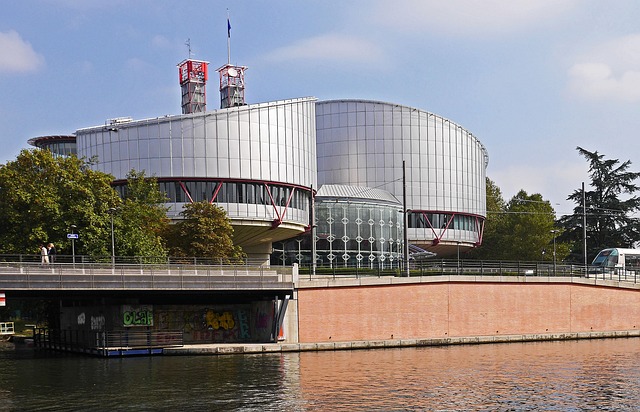
Переглядів:
13776
Коментарі:
1
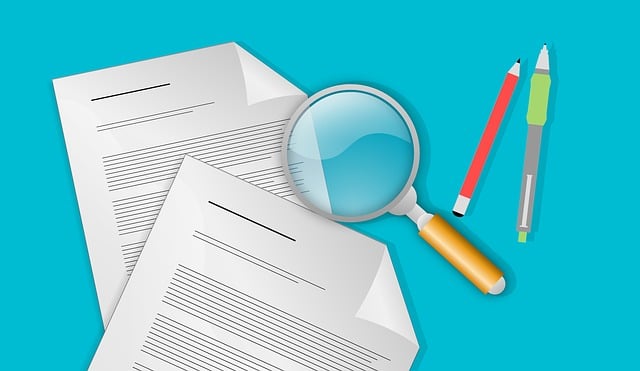
Переглядів:
7272
Коментарі:
1

Переглядів:
1266
Коментарі:
0

Переглядів:
1200
Коментарі:
0
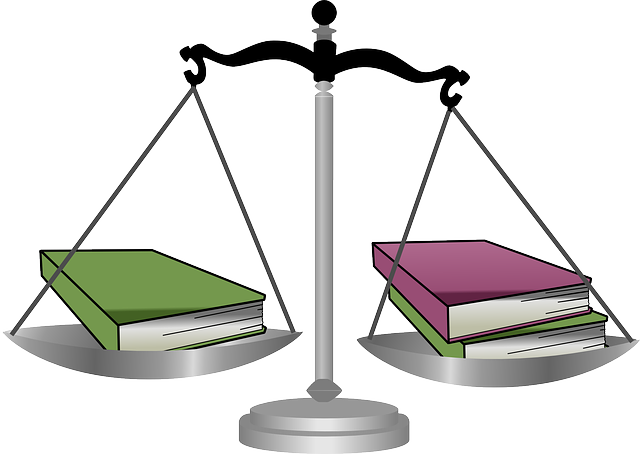
Переглядів:
1087
Коментарі:
0

Protocol.ua є власником авторських прав на інформацію, розміщену на веб - сторінках даного ресурсу, якщо не вказано інше. Під інформацією розуміються тексти, коментарі, статті, фотозображення, малюнки, ящик-шота, скани, відео, аудіо, інші матеріали. При використанні матеріалів, розміщених на веб - сторінках «Протокол» наявність гіперпосилання відкритого для індексації пошуковими системами на protocol.ua обов`язкове. Під використанням розуміється копіювання, адаптація, рерайтинг, модифікація тощо.
Повний текстCopyright © 2014-2024 «Протокол». Всі права захищені.
